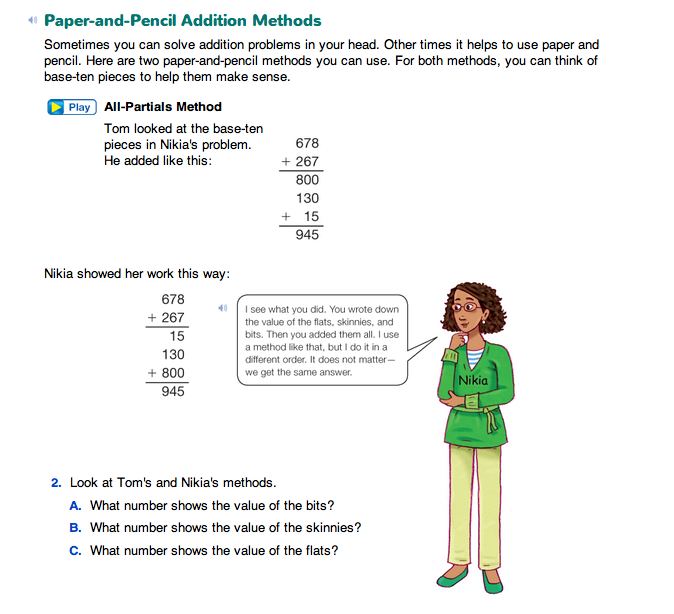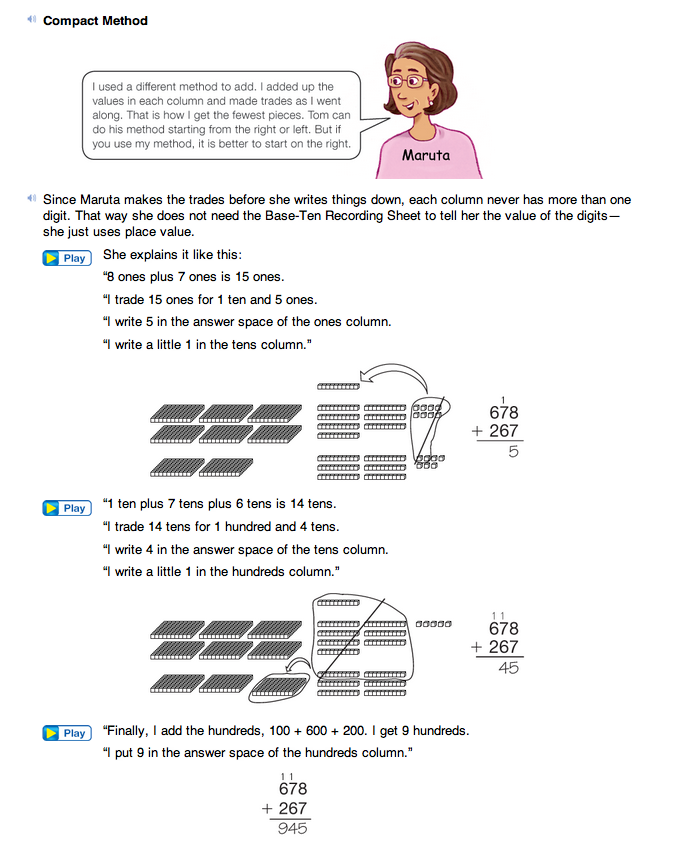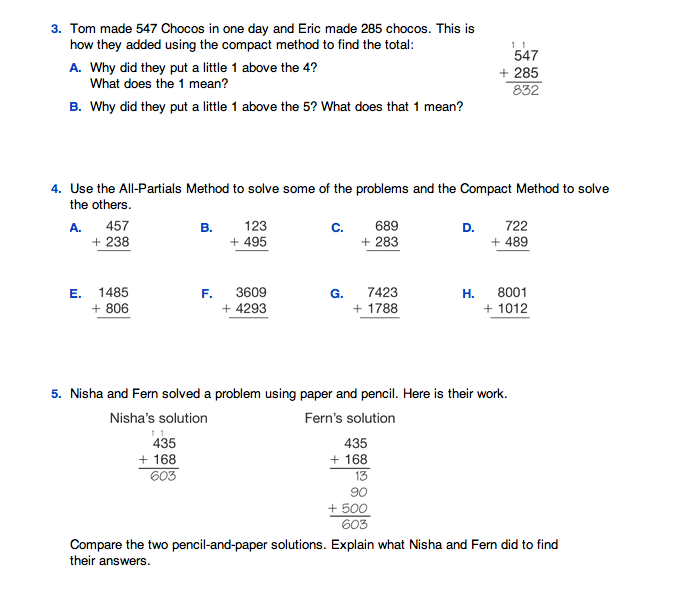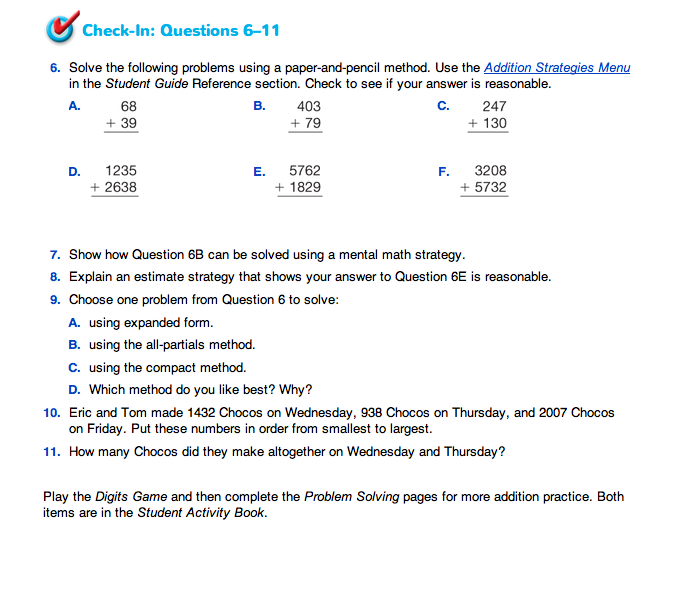Addition with Larger Numbers
Est. Class Sessions: 4Developing the Lesson
Part 3: Review Two Paper-and-Pencil Addition Methods
All-Partials Method. This part of the lesson reviews and extends the two paper-and-pencil algorithms students learned in Lesson 4 to adding three- and four-digit numbers. Each method depends on place value and parallels a solution with base-ten pieces.
Explain that when people add, they usually do not have base-ten pieces around. Base-ten shorthand is always available to represent the pieces, but it is tedious. Remind students that we want to use efficient methods for adding. Refer students to the Addition Strategies Menu in the Student Guide Reference section. See Figure 3.
Display the problem 202 + 178 and ask:
Ask students to recall the opening problem, 678 + 267, in the Addition with Larger Numbers pages in the Student Guide. Nikia solved the problem as shown in Figure 8. Previously, students solved this problem by trading the base-ten pieces. Another way is to add up the value of the pieces without regrouping: 800 + 130 + 15 = 945. The first method, all-partials, is an algorithm based on this solution. With this method, you write the value of each piece under the problem.
Direct students' attention to the Paper-and-Pencil Addition Methods section and read the All-Partials Method section together as a class. Note that neither the order in which you add the columns nor the lines on which you write the corresponding sums matters. You can work from right to left or from left to right. Both ways are shown in the Student Guide. Discuss Question 2 to make connections between the notation and the value of the base-ten pieces.
Next, display the problem 197 + 534. See Figure 9.
Say:
Remind students that when they added with base-ten pieces, the order in which they combined the pieces did not matter. When estimating, however, combining the largest pieces makes the most sense. When using all-partials to find an exact sum, adding from right to left or from left to right does not matter. But to estimate a sum, if you begin on the left you only need to add one or two columns to estimate the size of the final answer.
Ask students to solve 197 + 534 using the All-Partials Method.
Then ask questions that help students make connections between the base-ten pieces and the places of the digits:
Compact Method. Distribute base-ten pieces to student pairs. Display the problem 678 + 267 once again. See Figure 10. Earlier in this section, students solved this problem by trading, and some probably traded from left to right while others might have traded from right to left.
Now ask:
Ask students to combine the bits and make the trades. Record that answer in the space of the ones column for all to see. As students combine the skinnies and make trades, record that answer in the space of the tens column. Finally, record the number of flats in the space of the hundreds column. Show students that when done in this order, they can write down the digits of the answer one-by-one as they go along. Tell students the compact method is a paper-and-pencil method that records adding and regrouping from right to left as you go along.
Direct students' attention to the Student Guide pages and read the Compact Method section together as a class. Maruta shows how she solves 678 + 267 using the compact method.
Ask students to solve a few more problems using the compact method. As students solve the problems, help them to make connections between their paper-and-pencil solutions, the value of the places, and the base-ten pieces. Remind them to check the reasonableness of their answers. For example, have students solve 259 + 476. See Figure 11.
Ask:
Assign Questions 3–11 in the Student Guide.
As students work, ask questions such as the following:
Assign the Homework section of the Addition with Larger Numbers pages in the Student Guide for additional practice with using the all-partials and compact methods.





















